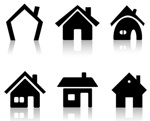Are we really where we live?

The important of audience clusters.
A while ago, my friend Eric and his family came for a visit. When he pulled into our driveway, he asked, “Hey, Shari, does every homeowner get a Subaru Outback with the house?” I looked around the cul de sac and up the street. As far as the eye could see, driveways hosted different-colored Subaru Outbacks.
If you work in this industry, you know that clusters are not just for breakfast anymore. Clusters are segments of people who have so much in common, even their similar consumer-purchase habits are similar.
Understanding these clusters is important in everything from budgeting to positioning and messaging. Know your audience — in all their idiosyncratic glory. But don’t be fooled into thinking clusters are just demographics. Clusters are people who make decisions in similar ways based on similar needs. Understanding clusters means understanding how target audiences make decisions for themselves and their families.
Segmentation is about far more than where we live, but we shouldn’t discount the importance of geography. There are a number of segmentation systems out there. When I looked up my zip code at Neilson’s You Are Where You Live, here is what I learned about myself: I learned that I might belong to one of these clusters.
Which am I? I have to click through to read more. I can tell you right now, I am not an empty-nester or a gray power.

Pools and Patios? Maybe. I mean, we do have a patio. How did they know? And when you click on the link, you can learn more about the media preferences or buying habits of this cluster. Amazing how they know I really do watch Frasier.
You may not fit perfectly into one of these segments, but it gives me more data to work with. I need to know who I am talking to so I can send them the right message. You Are Where You Live helps me figure out where to find them. Check it out. Are you where you live?




